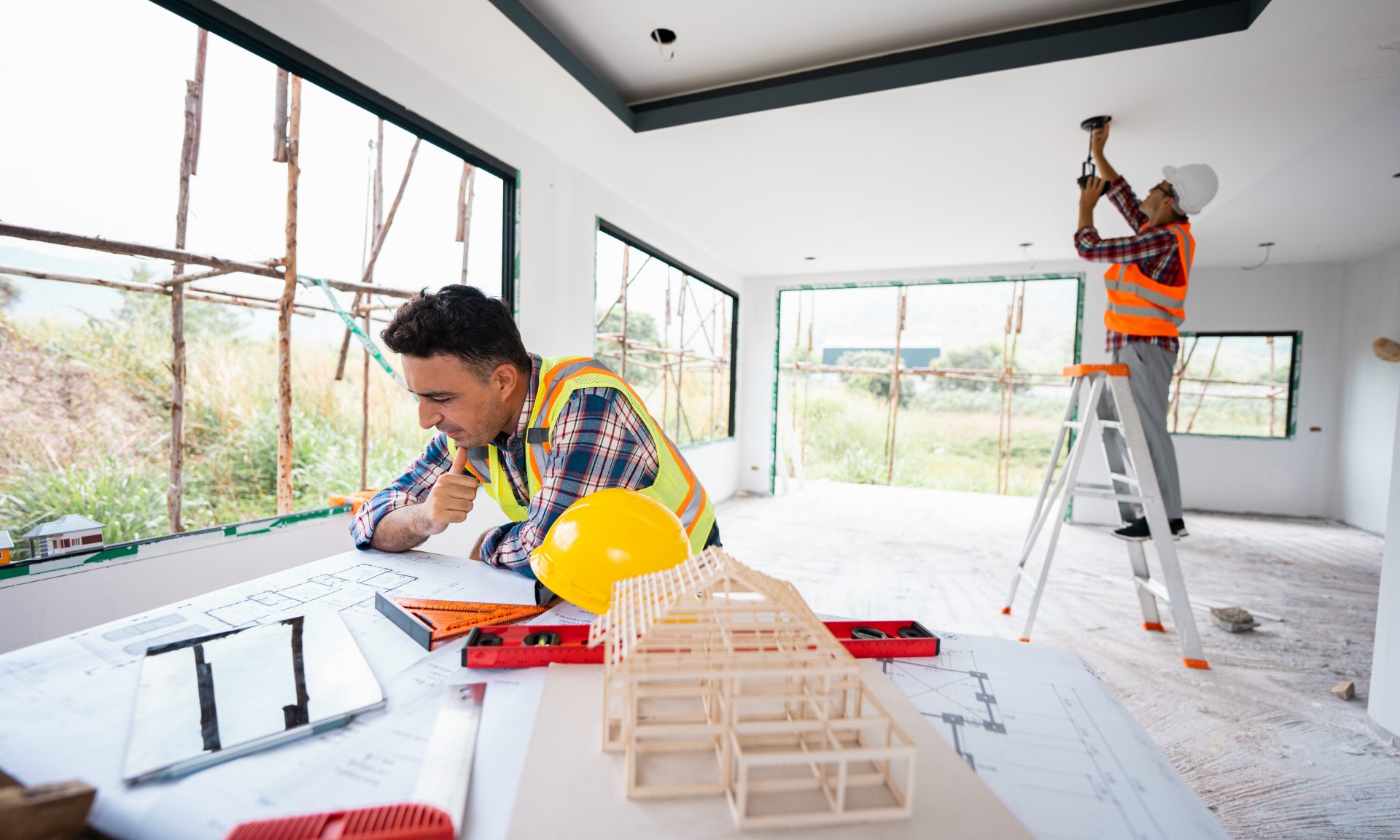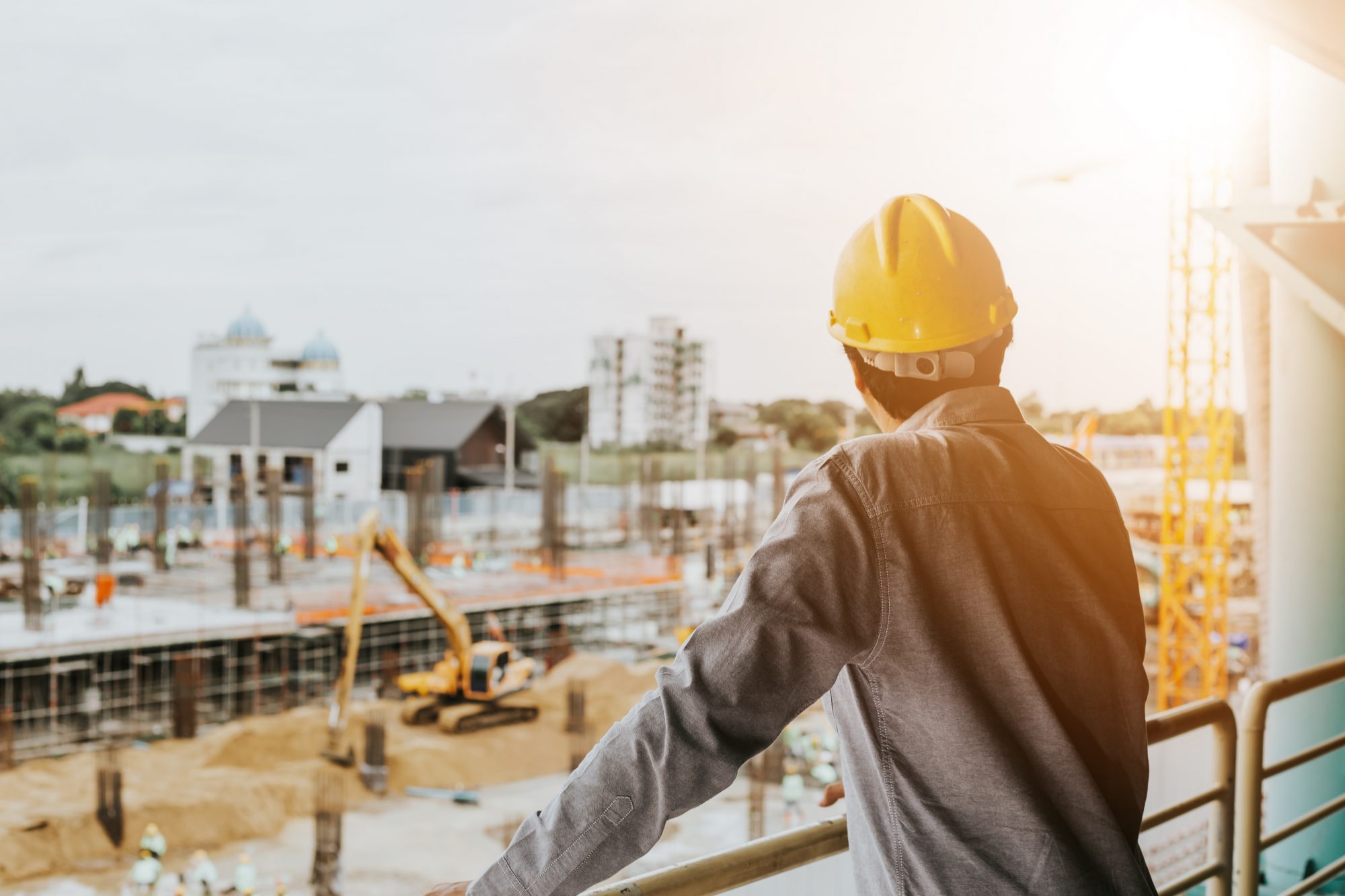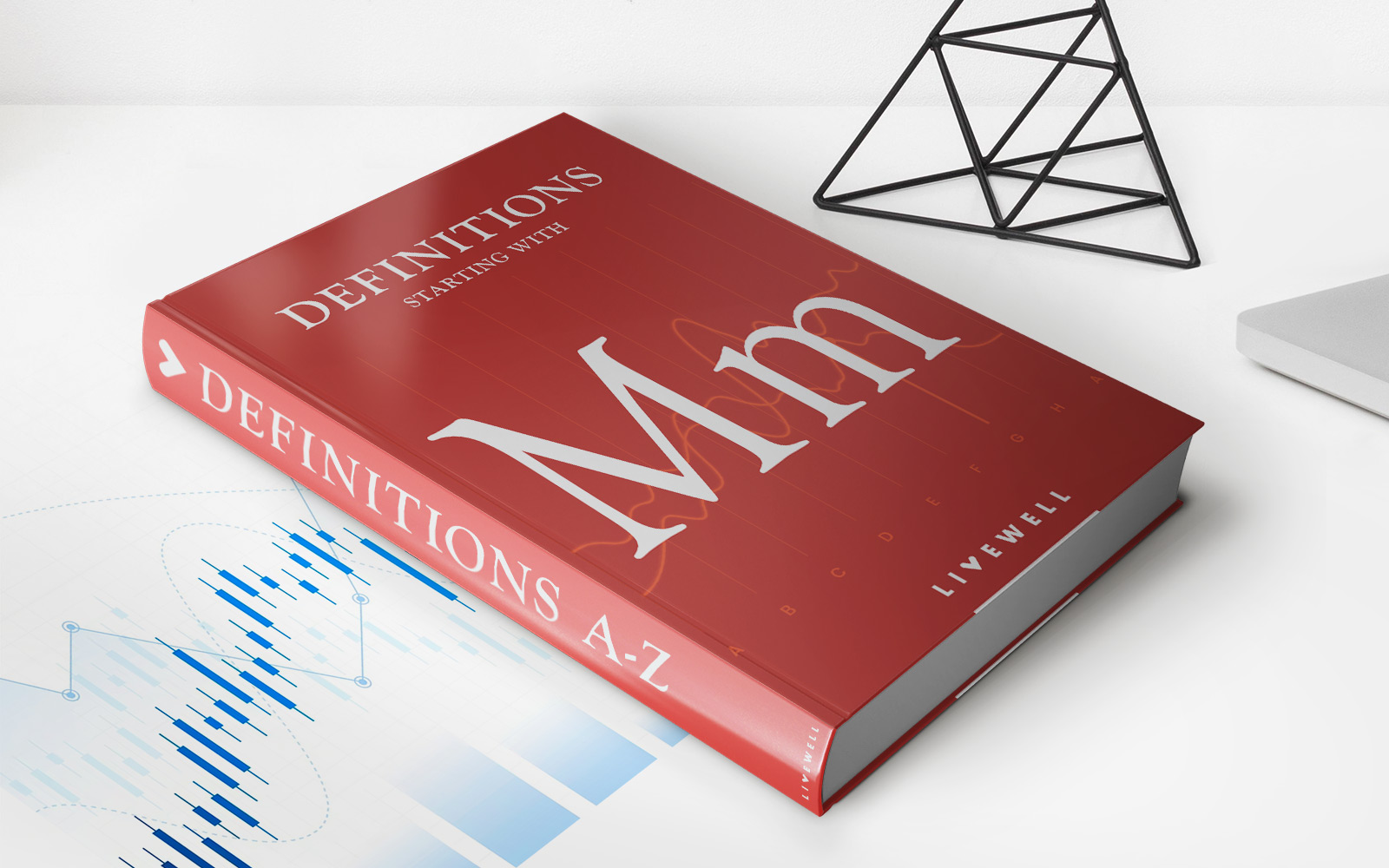

Finance
How Do Construction To Permanent Loans Work?
Published: February 17, 2024
Learn how construction to permanent loans work and finance your dream home. Discover the process and benefits of this unique loan option.
(Many of the links in this article redirect to a specific reviewed product. Your purchase of these products through affiliate links helps to generate commission for LiveWell, at no extra cost. Learn more)
Table of Contents
- Understanding the Basics of Construction to Permanent Loans
- Combining Construction Financing with Long-Term Mortgage
- Navigating the Phases of Financing and Construction
- Seamless Integration and Financial Benefits
- Navigating Potential Challenges and Considerations
- Navigating the Decision-Making Process
- Empowering Informed Decision-Making in Home Construction Financing
Introduction
Understanding the Basics of Construction to Permanent Loans
When embarking on the journey of building a dream home, financing is a critical aspect that requires careful consideration. Construction to permanent loans offer a unique solution for individuals seeking to construct a new residence. This innovative financial tool combines the features of a construction loan and a traditional mortgage, providing a seamless and efficient approach to financing the construction process.
Construction to permanent loans are designed to simplify the complex and often daunting process of building a new home. By offering a single loan that covers both the construction phase and the long-term mortgage, these loans provide a convenient and cost-effective option for aspiring homeowners. Understanding the intricacies of construction to permanent loans is essential for individuals looking to embark on a home building project, as it can significantly impact the overall success and financial well-being of the endeavor.
In this comprehensive guide, we will delve into the inner workings of construction to permanent loans, exploring their mechanics, advantages, disadvantages, and key considerations. By gaining a deeper understanding of this financing option, individuals can make informed decisions and navigate the home construction process with confidence and clarity. Let's embark on a journey to unravel the mysteries of construction to permanent loans and discover how they can pave the way to realizing the dream of a custom-built home.
What are Construction to Permanent Loans?
Combining Construction Financing with Long-Term Mortgage
Construction to permanent loans, also known as CTP loans, are a specialized form of financing that seamlessly integrates the construction phase and the permanent mortgage into a single transaction. This innovative financial instrument is tailored to meet the unique needs of individuals embarking on a home construction project. Unlike traditional construction loans, which require separate financing for the construction phase and the subsequent transition to a mortgage, construction to permanent loans offer a unified and streamlined approach to funding a new home build.
CTP loans are structured to provide funding for the construction of a new home, covering expenses such as land acquisition, building materials, labor costs, and permits. Once the construction phase is completed, the loan transitions into a permanent mortgage, eliminating the need for a separate loan closing and associated expenses. This integrated financing solution offers convenience, cost savings, and peace of mind for borrowers, as they can seamlessly transition from the construction process to long-term homeownership without the complexities of multiple loans.
One of the key distinguishing features of construction to permanent loans is their flexibility in accommodating various types of home construction projects. Whether individuals are planning to build a custom-designed residence, undertake a major renovation, or engage in a comprehensive home improvement project, CTP loans can adapt to diverse scenarios, making them a versatile option for aspiring homeowners.
Furthermore, construction to permanent loans are offered by a range of financial institutions, including banks, credit unions, and specialized lenders, providing borrowers with a broad spectrum of choices to suit their specific requirements and preferences. By understanding the fundamental characteristics of construction to permanent loans, individuals can leverage this financing tool to embark on their home building journey with confidence and clarity.
How Do Construction to Permanent Loans Work?
Navigating the Phases of Financing and Construction
Construction to permanent loans operate through a structured process that encompasses the distinct phases of home construction and long-term mortgage financing. Understanding the mechanics of these loans is essential for individuals seeking to embark on a seamless and efficient home building journey.
The initial phase of a construction to permanent loan involves the approval and disbursement of funds for the construction project. Borrowers work closely with the lender to establish the loan amount based on the projected cost of construction, including land acquisition, building materials, labor, and related expenses. Once the loan is approved, the funds are disbursed in stages or “draws” as construction progresses, ensuring that the necessary resources are available at each milestone of the building process.
During the construction phase, borrowers make interest-only payments on the funds disbursed, providing financial flexibility and minimizing the initial financial burden. This interest-only period alleviates the pressure of full mortgage payments during the construction period, allowing borrowers to focus on the building process without the added strain of long-term mortgage obligations.
Upon the completion of construction and the issuance of a certificate of occupancy, the loan seamlessly transitions into a permanent mortgage. This transition eliminates the need for a separate loan closing, saving time and reducing closing costs for the borrower. The permanent mortgage terms, including the interest rate, monthly payments, and loan duration, are predetermined during the initial loan application, providing borrowers with clarity and predictability regarding their long-term homeownership expenses.
Construction to permanent loans offer a comprehensive and integrated approach to financing, effectively bridging the gap between the construction phase and permanent mortgage, and providing borrowers with a streamlined and convenient pathway to realizing their dream home.
Advantages of Construction to Permanent Loans
Seamless Integration and Financial Benefits
Construction to permanent loans offer a host of advantages for individuals embarking on the journey of building a new home. Understanding the unique benefits of this financing option is essential for making informed decisions and optimizing the home construction process.
- Streamlined Financing: CTP loans streamline the financing process by combining construction funding and long-term mortgage into a single transaction, eliminating the need for separate loans and multiple closings. This integrated approach saves time, reduces paperwork, and minimizes associated expenses, providing borrowers with a convenient and efficient financing solution.
- Cost Savings: By transitioning seamlessly from the construction phase to a permanent mortgage, borrowers can avoid additional closing costs typically associated with traditional construction loans and subsequent mortgage arrangements. This results in potential cost savings and a more streamlined financial experience.
- Interest-Only Payments: During the construction phase, borrowers make interest-only payments on the disbursed funds, providing financial flexibility and alleviating the immediate burden of full mortgage payments. This feature allows individuals to manage their cash flow effectively during the construction process.
- Predefined Terms: The terms of the permanent mortgage, including the interest rate, monthly payments, and loan duration, are established during the initial loan application, providing borrowers with clarity and predictability regarding their long-term homeownership expenses. This predetermined structure offers peace of mind and financial planning stability.
- Flexibility for Custom Projects: CTP loans accommodate a wide range of home construction projects, including custom-designed residences, major renovations, and comprehensive home improvements. This flexibility makes construction to permanent loans a versatile option for individuals with diverse construction needs and aspirations.
By leveraging the advantages of construction to permanent loans, aspiring homeowners can navigate the complexities of financing a new home build with confidence and efficiency, paving the way for a seamless and rewarding construction experience.
Disadvantages of Construction to Permanent Loans
Navigating Potential Challenges and Considerations
While construction to permanent loans offer compelling advantages, it is important to consider the potential disadvantages and challenges associated with this financing option. Understanding these aspects is crucial for individuals evaluating the suitability of CTP loans for their home construction projects.
- Complex Approval Process: The approval process for construction to permanent loans can be more intricate and demanding compared to traditional mortgage approvals. Lenders may require detailed project plans, cost estimates, and construction timelines, adding complexity to the initial application and approval process.
- Market Fluctuations: The extended timeline of construction projects exposes borrowers to potential market fluctuations in interest rates and construction costs. Unforeseen changes in economic conditions can impact the overall cost of the project and long-term mortgage terms, potentially affecting the financial viability of the endeavor.
- Construction Risks: Engaging in a construction project inherently involves risks, including construction delays, unforeseen expenses, and potential complications during the building process. Borrowers must carefully assess and mitigate these risks to ensure the successful completion of the project.
- Commitment to the Project: Once the construction to permanent loan is initiated, borrowers are committed to seeing the construction project through to completion. This long-term commitment requires careful planning and a steadfast dedication to the construction process, as the loan terms are structured to accommodate the transition to a permanent mortgage upon project finalization.
- Market Variability: The real estate market can be subject to fluctuations and uncertainties, which can impact the value of the completed home. Borrowers should consider the potential variability in property values and market conditions when opting for a construction to permanent loan.
By carefully weighing the advantages and disadvantages of construction to permanent loans, individuals can make informed decisions and navigate the complexities of home construction financing with clarity and foresight. Understanding the potential challenges and considerations associated with CTP loans is essential for optimizing the overall success of a home building project.
Key Considerations for Construction to Permanent Loans
Navigating the Decision-Making Process
When evaluating the suitability of construction to permanent loans for a home construction project, several key considerations come into play. These factors are essential for individuals to weigh as they navigate the decision-making process and seek to optimize their financing and construction experience.
- Project Planning and Budgeting: Thorough project planning and accurate budgeting are crucial for the success of a construction to permanent loan. Borrowers should meticulously outline the scope of the project, obtain detailed cost estimates, and establish a comprehensive budget to ensure that the loan amount aligns with the construction needs.
- Financial Stability and Preparedness: Embarking on a construction project requires a solid financial foundation. Borrowers should assess their financial stability, creditworthiness, and ability to manage long-term mortgage payments to determine their readiness for a construction to permanent loan.
- Construction Expertise and Oversight: Engaging experienced professionals, such as architects, builders, and contractors, is essential for the successful execution of a construction project. Borrowers should ensure that they have access to reliable expertise and oversight to manage the construction process effectively.
- Risk Assessment and Mitigation: Identifying potential risks associated with the construction project, such as construction delays, cost overruns, and market fluctuations, is critical. Developing strategies to mitigate these risks and safeguard the project’s financial and operational integrity is essential for borrowers.
- Understanding Loan Terms and Obligations: Thoroughly comprehending the terms, conditions, and obligations associated with a construction to permanent loan is imperative. Borrowers should seek clarity on interest rates, repayment schedules, draw procedures, and other loan-specific details to make informed decisions.
- Market and Economic Considerations: Assessing the prevailing real estate market conditions, interest rate trends, and economic stability is essential for gauging the long-term viability of a construction to permanent loan. Borrowers should consider the potential impact of market variability on the project and long-term mortgage terms.
By carefully evaluating these key considerations, individuals can approach construction to permanent loans with a comprehensive understanding of the financial, operational, and strategic aspects involved. Navigating the decision-making process with foresight and diligence can pave the way for a successful and rewarding home construction journey.
Conclusion
Empowering Informed Decision-Making in Home Construction Financing
Embarking on the path to building a new home is a monumental and deeply personal endeavor. The choice of financing plays a pivotal role in shaping the overall experience and long-term outcomes of the construction project. Construction to permanent loans offer a compelling and versatile option for individuals seeking a seamless and integrated approach to funding their dream home.
By exploring the mechanics, advantages, disadvantages, and key considerations of construction to permanent loans, aspiring homeowners can gain valuable insights into this innovative financing solution. The seamless integration of construction funding and long-term mortgage, along with the potential for cost savings, financial flexibility, and predetermined mortgage terms, positions CTP loans as a viable choice for a diverse range of home construction projects.
However, it is essential for individuals to approach the decision to pursue a construction to permanent loan with careful consideration, thorough planning, and a clear understanding of the associated complexities and potential challenges. By assessing their project needs, financial readiness, risk mitigation strategies, and market dynamics, borrowers can make informed decisions that align with their aspirations and long-term goals.
Ultimately, construction to permanent loans empower individuals to navigate the home construction journey with confidence, efficiency, and financial clarity. The seamless transition from construction financing to long-term homeownership, coupled with the flexibility to accommodate diverse project types, positions CTP loans as a valuable tool for realizing the dream of a custom-built home.
As individuals weigh the multifaceted aspects of construction to permanent loans, they are equipped to make informed decisions that lay the foundation for a successful and rewarding home construction experience. By leveraging the benefits of CTP loans while diligently addressing potential challenges, aspiring homeowners can embark on their construction journey with a sense of empowerment and strategic foresight, paving the way for the realization of their vision for a new, custom-built residence.














